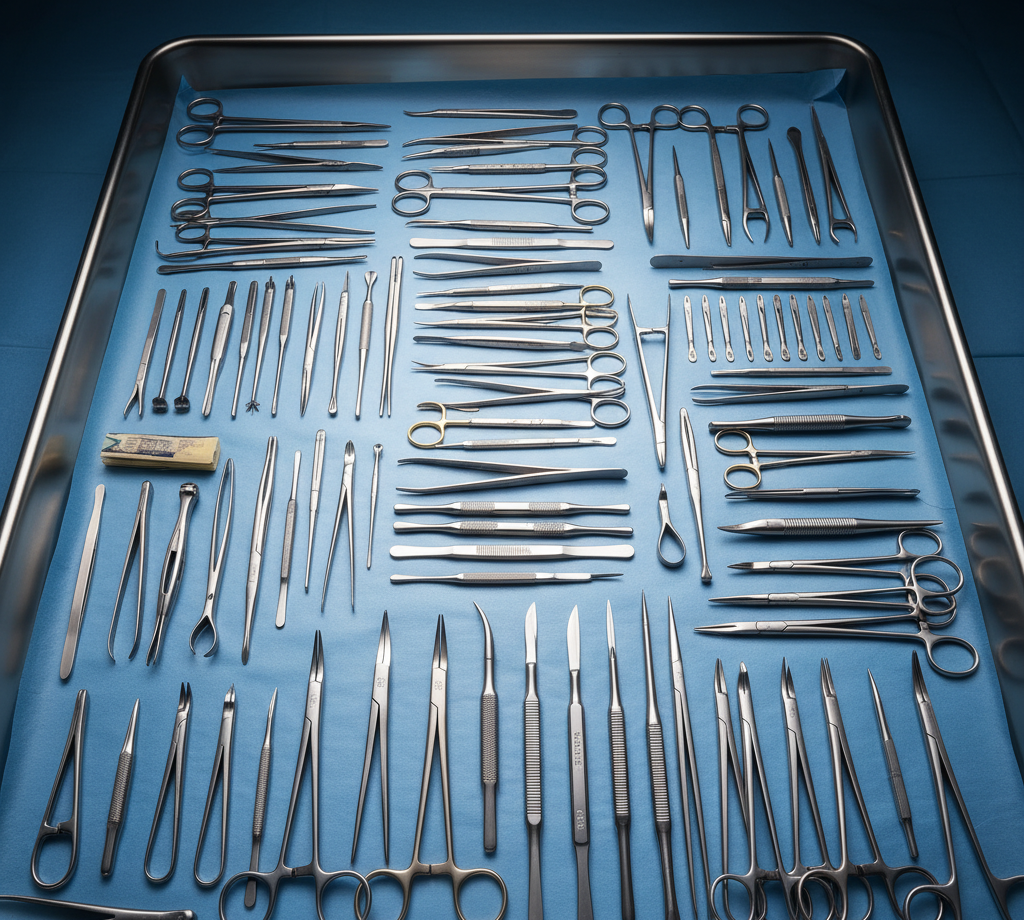Introduction
The world of surgery is built on precision, skill, and reliable tools. Every surgical procedure, whether minor or complex, requires the use of specialized instruments designed for cutting, clamping, retracting, or suturing. But one common question asked by students, professionals, and even patients is:
“How many surgical instruments are there?”
The answer is not straightforward, as the exact number depends on medical specialties, regional practices, and continuous innovation. However, experts estimate that there are more than 10,000 different types of surgical instruments used worldwide. These range from basic scalpels and forceps to highly advanced robotic surgical tools.
In this article, we will explore the categories of surgical instruments, their variations, how they are classified, and why the number continues to grow with medical advancements.
Understanding the Scope of Surgical Instruments
When we ask how many surgical instruments are there, it is important to consider:
- Core instruments used in almost every surgery.
- Specialty-specific instruments designed for neurosurgery, orthopedics, ophthalmology, ENT, cardiovascular, and other fields.
- Disposable vs. reusable instruments.
- Modern powered and robotic surgical instruments.
This makes the total number dynamic rather than fixed.
Major Categories of Surgical Instruments
Most surgical instruments can be divided into eight major categories. Each category contains dozens—or even hundreds—of variations.
1. Cutting and Dissecting Instruments
- Examples: Scalpels, surgical scissors, osteotomes, chisels.
- Purpose: To cut skin, tissue, or bone.
- Variations: Different blade sizes, curved or straight designs, fine vs. heavy-duty scissors.
2. Grasping and Holding Instruments
- Examples: Forceps, needle holders, towel clamps.
- Purpose: To hold tissue or surgical materials.
- Variations: Toothed vs. smooth jaws, locking vs. non-locking handles.
3. Clamping and Occluding Instruments
- Examples: Hemostats, Kelly forceps, vascular clamps.
- Purpose: To control bleeding and clamp blood vessels.
- Variations: Small mosquito clamps vs. large vascular clamps.
4. Retracting and Exposing Instruments
- Examples: Senn retractors, Balfour retractors, Weitlaner retractors.
- Purpose: To hold tissue apart and expose the surgical site.
- Variations: Handheld vs. self-retaining retractors.
5. Suturing and Stapling Instruments
- Examples: Needle drivers, surgical staplers, ligature carriers.
- Purpose: To close wounds or surgical incisions.
- Variations: Manual vs. automatic staplers.
6. Suction and Aspirating Instruments
- Examples: Yankauer suction tip, Poole suction, Frazier suction.
- Purpose: To remove blood, fluids, and debris.
- Variations: Different tube diameters for different procedures.
7. Dilating and Probing Instruments
- Examples: Uterine dilators, lacrimal probes, grooved directors.
- Purpose: To explore or enlarge openings.
- Variations: Rigid vs. flexible designs.
8. Specialized Instruments
- Examples: Neurosurgical drills, ophthalmic micro-scissors, ENT speculums.
- Purpose: To support specific surgeries.
- Variations: Specialty-focused, often very delicate or highly technical.
Estimated Numbers by Category
While the exact count is constantly evolving, medical experts estimate approximate ranges:
- Cutting & Dissecting: 800–1,000 variations
- Grasping & Holding: 1,500+ variations
- Clamping & Occluding: 2,000+ variations
- Retracting & Exposing: 1,200+ variations
- Suturing & Stapling: 600+ variations
- Suction & Aspirating: 200+ variations
- Dilating & Probing: 300+ variations
- Specialty Instruments: 3,000–4,000+ variations
Altogether, this brings the total to over 10,000 surgical instruments worldwide.
Why the Number Keeps Growing
The question “how many surgical instruments are there” cannot have a fixed answer because the number is continuously increasing due to:
- Medical Specialization – Each field develops unique tools.
- Technological Advances – Introduction of powered, endoscopic, and robotic instruments.
- Patient-Specific Needs – Customized tools for complex surgeries.
- Innovation by Manufacturers – Continuous improvement of ergonomics, safety, and efficiency.
Modern Developments in Surgical Instruments
1. Powered Surgical Instruments
Used in orthopedics and neurosurgery for drilling, sawing, and cutting with precision.
2. Minimally Invasive Instruments
Endoscopic and laparoscopic tools designed for smaller incisions.
3. Robotic Surgery Tools
Da Vinci and other robotic systems use miniature instruments for advanced procedures.
4. Disposable Instruments
Single-use instruments are growing in popularity to reduce infection risk.
Importance of Standardization
With thousands of instruments in use, classification and standardization are critical:
- Hospitals use trays with organized sets.
- Students use differentiating surgical instruments books to learn recognition.
- Manufacturers (such as Professional Enterprises) provide detailed catalogs with codes.
FAQs
1. How many surgical instruments are used in general surgery?
A standard general surgery tray may contain 80–120 instruments, depending on the procedure.
2. How many total surgical instruments exist?
Globally, there are 10,000+ types of surgical instruments across all specialties.
3. Which surgical instruments are most common?
Scalpels, scissors, forceps, retractors, and needle holders are found in almost every procedure.
4. Do all hospitals use the same instruments?
No, variations exist based on specialty, region, and surgeon preference.
5. How do students learn about all instruments?
Through structured resources like a differentiating surgical instruments book and practical lab sessions.
Conclusion
So, how many surgical instruments are there? While it is impossible to give a single number, medical experts agree that there are well over 10,000 instruments in use worldwide. These range from simple scalpels to advanced robotic tools.
Understanding their classification helps students, nurses, surgeons, and technicians work more effectively in the operating room. With continuous innovation, the number of instruments will only keep increasing, making education and standardization more important than ever.
At Professional Enterprises, we support healthcare providers with high-quality surgical instruments, detailed product catalogs, and global export services—ensuring that professionals always have the right tools for precise surgical outcomes.

